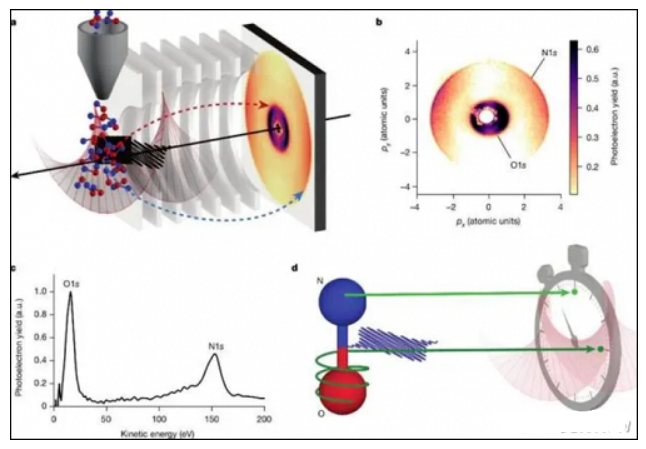Attosecond pulses reveal the secrets of time delay
Scientists in the United States, with the help of attosecond pulses, have revealed new information about the photoelectric effect: the photoelectric emission delay is up to 700 attoseconds, much longer than previously expected. This latest research challenges existing theoretical models and contributes to a deeper understanding of the interactions between electrons, leading to the development of technologies such as semiconductors and solar cells.
The photoelectric effect refers to the phenomenon that when light shines on a molecule or atom on a metal surface, the photon interacts with the molecule or atom and releases electrons. This effect is not only one of the important foundations of quantum mechanics, but also has a profound impact on modern physics, chemistry and materials science. However, in this field, the so-called photoemission delay time has been a controversial topic, and various theoretical models have explained it to different degrees, but no unified consensus has been formed.
As the field of attosecond science has improved dramatically in recent years, this emerging tool offers an unprecedented way to explore the microscopic world. By precisely measuring events that occur on extremely short time scales, researchers are able to gain more information about the dynamic behavior of particles. In the latest study, they used a series of high-intensity X-ray pulses produced by the coherent light source at the Stanford Linac Center (SLAC), which lasted only a billionth of a second (attosecond), to ionize the core electrons and “kick” out of the excited molecule.
To further analyze the trajectories of these released electrons, they used individually excited laser pulses to measure the emission times of the electrons in different directions. This method allowed them to accurately calculate the significant differences between the different moments caused by the interaction between the electrons, confirming that the delay could reach 700 attoseconds. It is worth noting that this discovery not only validates some previous hypotheses, but also raises new questions, making relevant theories need to be re-examined and revised.
In addition, the study highlights the importance of measuring and interpreting these time delays, which are critical to understanding experimental results. In protein crystallography, medical imaging, and other important applications involving the interaction of X-rays with matter, these data will be an important basis for optimizing technical methods and improving imaging quality. Therefore, the team plans to continue to explore the electronic dynamics of different types of molecules in order to reveal new information about the electronic behavior in more complex systems and their relationship with molecular structure, laying a more solid data foundation for the development of related technologies in the future.

Post time: Sep-24-2024





